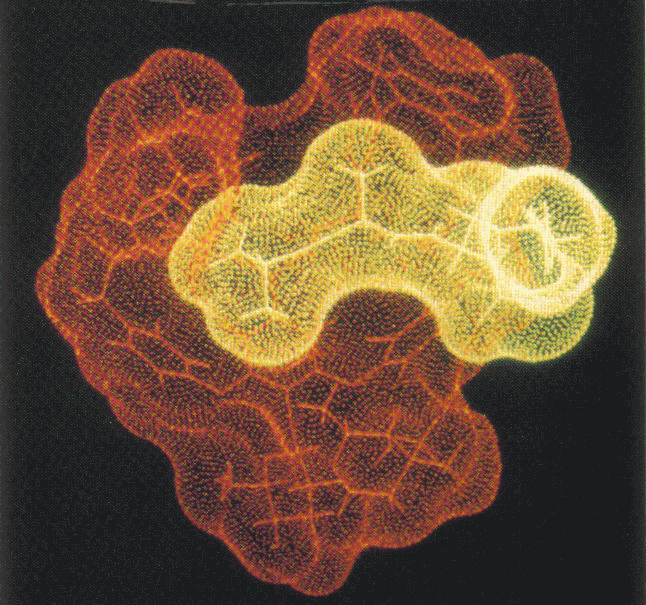

The computing activities under this heading are those that are not attributable to any one Board of SERC. They include the Joint Research Councils' Cray X-MP/416 supercomputer service, SERC's IBM mainframe/supercomputing service, a number of networking and computing infrastructure services that are used by all Boards, and the provision of foundation support to three university groups working on parallel computing.
The Cray supercomputer service, inaugurated in 1987, remains the most powerful supercomputing facility available to the British academic community. At the end of 1990 there were 147 peer-reviewed grants with current allocations of Cray time, and the demand to use the machine exceeded its capacity by almost 30%.
The supercomputer is used mainly for the simulation and modelling of complex systems in the natural sciences, and major projects are in progress in physics, chemistry, engineering and the environmental sciences. Much of the work uses the vector hardware on the Cray to excellent effect. During the year, three of the user groups gained awards in Cray Research's international 'Gflops' awards for the highest sustained performance on scientific problems. In order to realise the performance the work had to be moved to more powerful Cray computers in the USA, but the codes were developed and are in full production use on the Atlas Centre machine running at as high a performance as can be attained in this country. Last year the record performance on the Cray was reported as 558 million floating point operations a second; this year the record is 820 million, an illustration of the effort that users are making to extract the greatest efficiency from the facility.
The major change to the service during the year was to replace the dated 'batch processing' operating system on the Cray by the more modern Unicos operating system which permits a broader range of facilities. The change was a substantial undertaking and did not proceed as smoothly as had been planned due to difficulties encountered with the new software. However once the change had been completed the service was noticeably more robust than with the old operating system and options for new developments in computing facilities and communications were opened up.

An arrangement has been made with Cray Research UK whereby Cray have added extra memory and disks in exchange for access to a few percent of the machine's resources made available to them as a bureau service. The increase in capacity resulting from the addition more than covers the requirements of the bureau service, and Research Council users are benefitting significantly from the enhanced facilities. The facilities at the Centre for producing videos of the output of computer simulations have been widely used, and attention is now turning to the provision of high performance network connections between supercomputers and remote users taking advantage of the broader set of protocols that are now becoming available over the national academic network.
It is in the nature of large-scale computer simulation that scientists w ish to press forward to more realistic models or to more complex phenomena which impose greater demands on computing facilities. The Cray X-MP/416 is no longer in the first rank of facilities by world standards; supercomputers with three times the power and with much larger memory are already being used by scientists in other countries, and a case for enhancements to the UK's national supercomputing provision has been submitted to the Advisor Board for Research Councils.
The IBM service has been operating at full capacity for the whole year. The service has been stable and reliable with very few problems, and the presence of vector facilities on the IBM has enabled work to be offloaded from the Cray, thereby relieving some of the overload on the national supercomputing services.
The IBM currently supports two types of activity: large-scale computing for SERC peer-reviewed projects from all Boards together with some SERC administrative applications, and additional work carried out under the auspices of a joint study agreement with IBM UK. The aims of the joint study agreement include fostering the application of high performance computing to as wide a range of scientific and engineering applications as possible and reporting to IBM on the performance and quality of the Company's high performance computing products. A successful one-day seminar on the achievements of the study in its first year took place in May 1990, and several training courses and seminars for academics and industrialists have been held.
In addition, the IBM has dealt with peer-reviewed computing from all Boards including a heavy load from particle physics experiments at the LEP accelerator at CERN and at DESY in Hamburg. The data handling capabilities of the new automated cartridge store have been invaluable here and in dealing with work on the Cray; large-scale computing is concerned not just with the ability to do high-speed arithmetic; the ability to manage enormous quantities of data is just as important. The networking and infrastructure services were largely unchanged during the year, with minor changes of emphasis in accordance with developing requirements. Towards the end of the year the Computer Board agreed to an extension of the protocol set that may be supported over the joint academic network (JANET); this will open up options for new styles of network communication that will benefit users of high-performance computing.
The foundation support activity in parallel computing follows a decision by the Council in July 1989 to provide £2 million over four years to assist the development of scientific and engineering applications of novel architecture computing in selected higher education institutions, currently Edinburgh, Manchester and Southampton Universities. The activity is overseen by a new Novel Architecture Computing Committee, and in the first year effort has been concentrated on building up the base of equipment and staff, defining the initial programmes of work and the criteria by which the success of the activity will be judged.